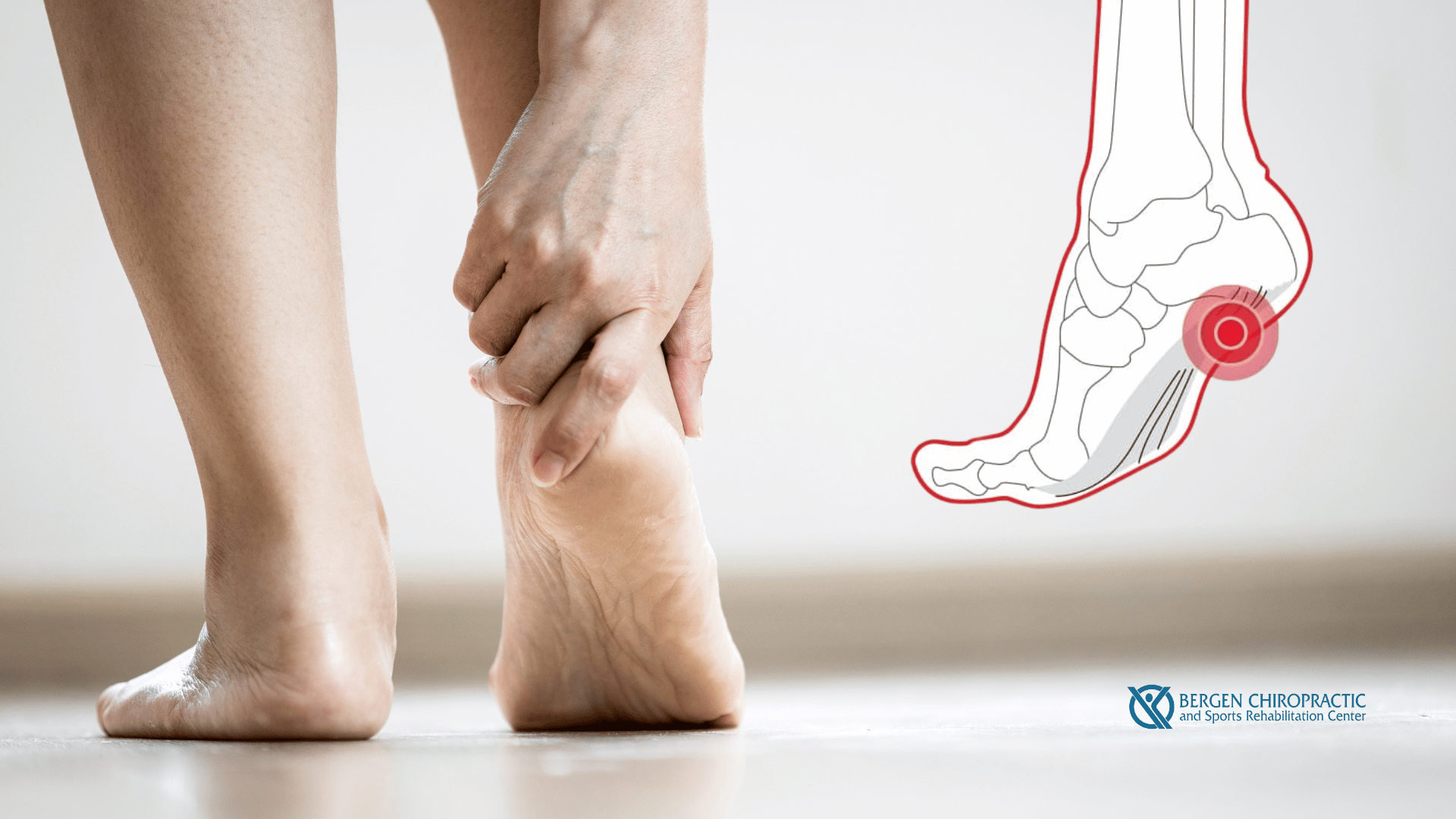If you’ve been wincing with every step and wondering what’s going on with your feet, you might be dealing with plantar fasciitis.
The pain often manifests on the bottom of your foot, particularly near the heel and arch area, due to the thick band of tissue that provides support and stability to the foot structure.
But how can you be sure? Let’s dive into the world of plantar fasciitis diagnostics and uncover the mystery behind your heel pain.
5 Signs of Plantar Fasciitis
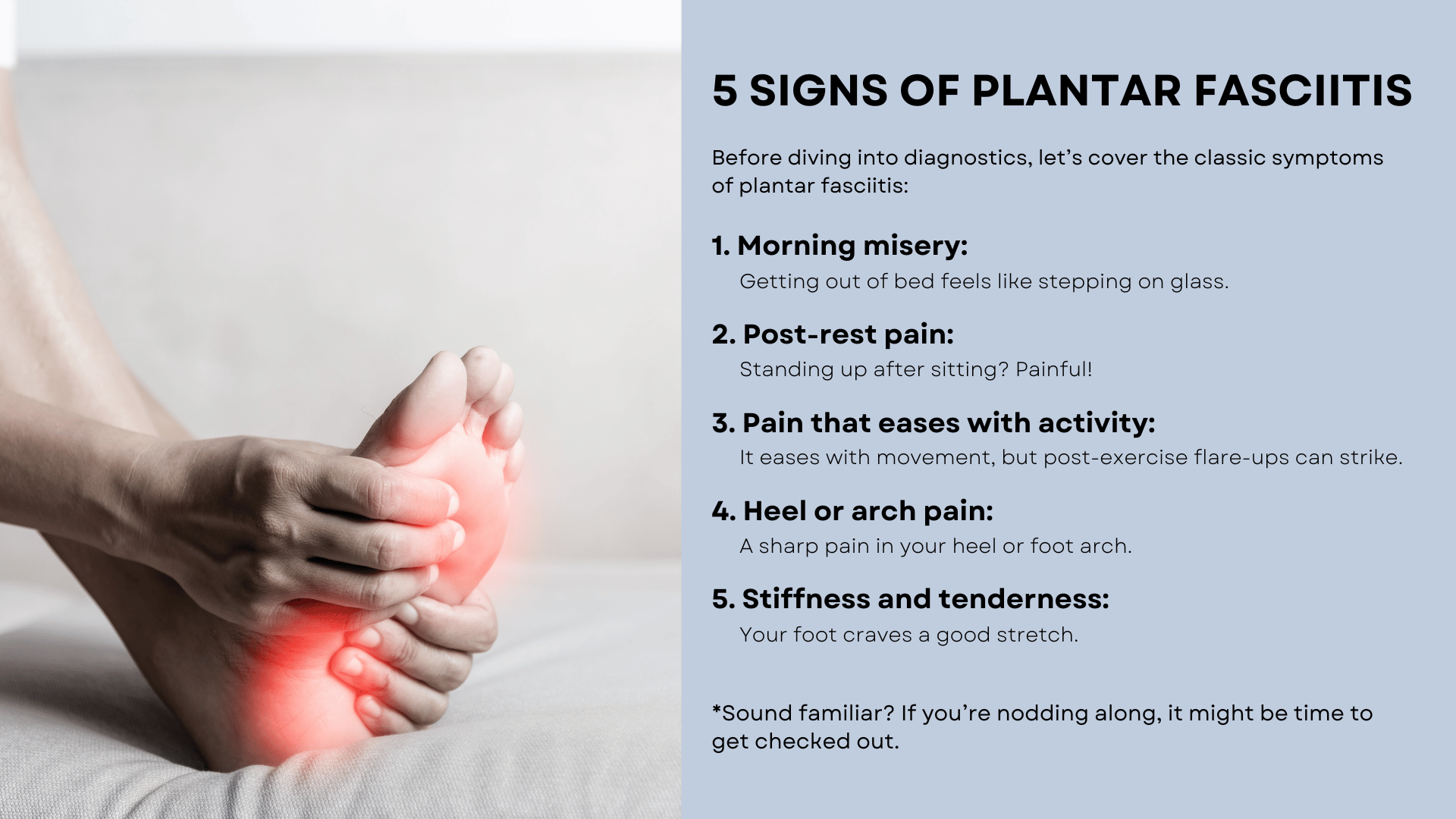
Before we jump into any fancy diagnostic techniques, let’s talk about the telltale plantar fasciitis symptoms that you might be dealing with:
- Morning misery: That first step out of bed feels like walking on broken glass.
- Post-rest pain: Standing up after sitting for a while? Ouch!
- Pain that eases with activity: It hurts less as you move, but watch out for that post-exercise flare-up.
- Heel or arch pain: A stabbing sensation in your heel or along the arch of your foot.
- Stiffness and tenderness: Your foot feels like it needs a good stretch.
Sound familiar? If you’re nodding along, it might be time to get checked out.
How to Tell Plantar Fasciitis from Heel Pain
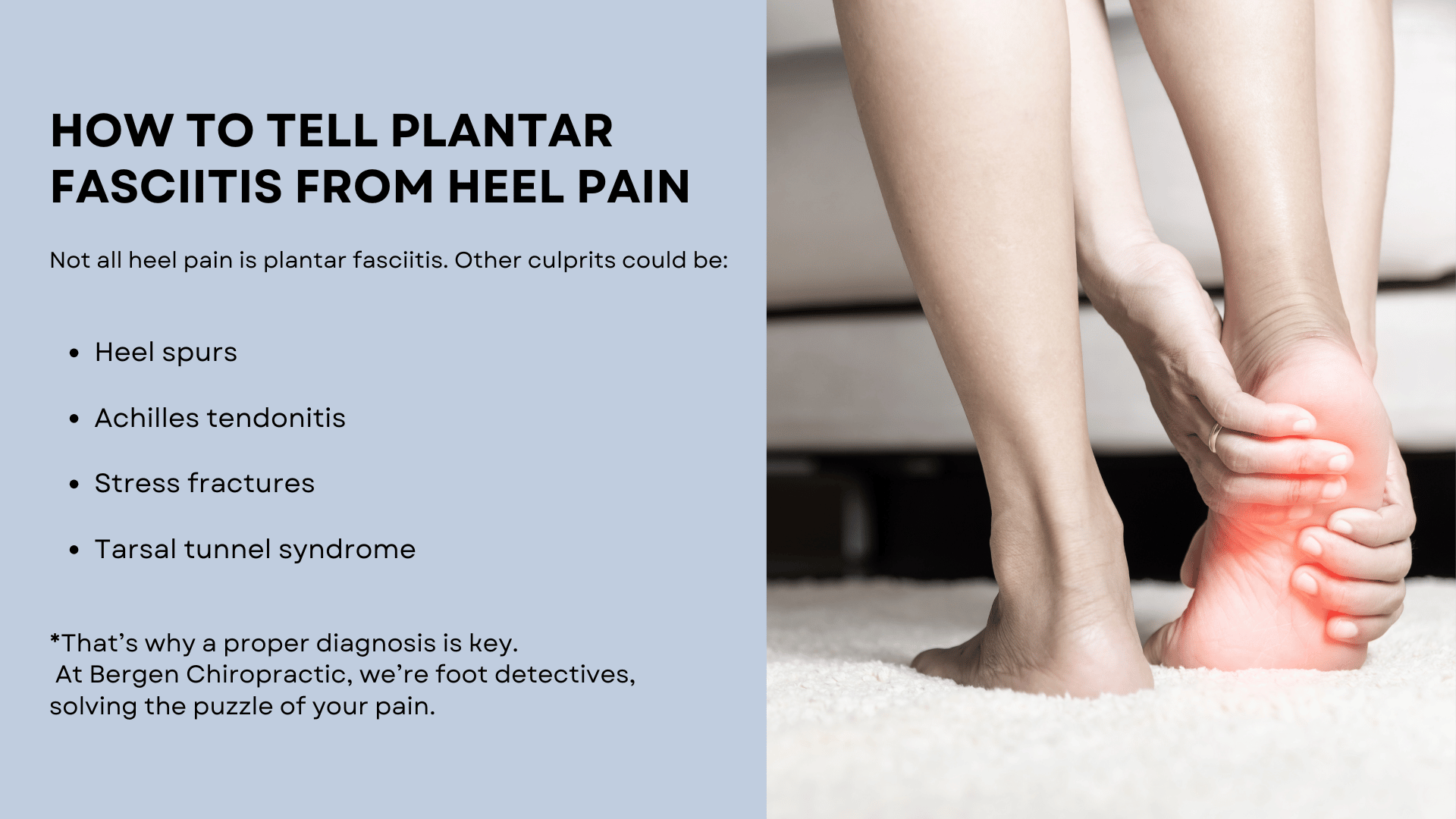
Not all heel pain is plantar fasciitis. Other culprits could be:
- Heel spurs
- Achilles tendonitis
- Stress fractures
- Tarsal tunnel syndrome
This is why getting a proper diagnosis is crucial. At Bergen Chiropractic, we’re like detectives for your feet, piecing together the clues to solve your pain puzzle.
Plantar Fasciitis Diagnostic Techniques in Chiropractic Care
Our chiropractors use a variety of techniques to diagnose plantar fasciitis. We also recommend collaborating with a physical therapist to develop a tailored exercise program, which includes stretching and various therapies to alleviate pain and improve foot function.
Utilizing Palpation to Detect Pain Points
Palpation is one of our go-to techniques. We can locate sensitive or sore spots by carefully feeling your muscles and tissues, including the calf muscles.
Palpation lets us identify areas that may be inflamed or tender, guiding us to where the underlying problem might be. This is a gentle and precise way to pinpoint where pain begins.
Gait Analysis: Understanding Your Walking Pattern
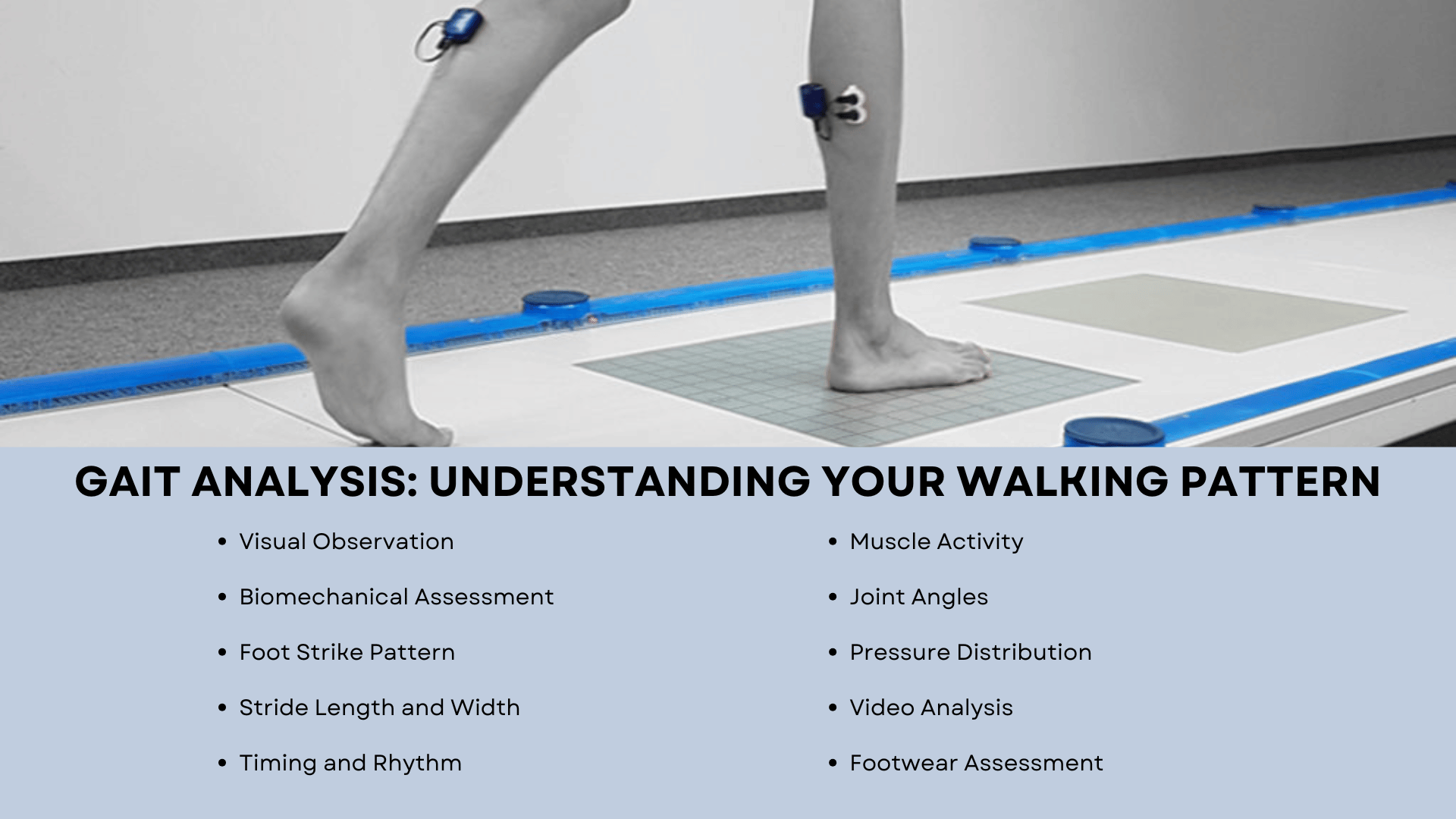
Gait analysis is a crucial diagnostic tool to understand the root cause of your plantar fasciitis.
Patients with flat feet or high arches are more prone to developing plantar fasciitis due to the structure of their feet, which can contribute to irritation and pain in the plantar fascia.
Visual Observation
- We’ll watch you walk naturally in a straight line.
- We may ask you to walk on a treadmill for a more extended period.
- If relevant, we might observe you running as well.
Biomechanical Assessment
- We analyze the movement of your feet, ankles, knees, hips, and lower back.
- We look for any asymmetries or irregularities in your gait.
Foot Strike Pattern
- We observe how your foot lands (heel, midfoot, or forefoot).
- We check for overpronation or supination.
Stride Length and Width
- We measure the length and width of your steps.
- Abnormalities here can indicate compensation for pain.
Timing and Rhythm
- We assess the timing of each phase of your gait cycle.
- Irregularities can point to specific areas of discomfort.
Muscle Activity
- We observe which muscles are active during different phases of your gait.
- This helps identify any muscle imbalances or weaknesses.
Joint Angles
- We analyze the angles of your joints during movement.
- This can reveal issues with flexibility or joint function.
Pressure Distribution
- We may use pressure-sensitive mats to see how weight is distributed across your feet.
- This helps identify areas of excessive pressure that could contribute to plantar fasciitis.
Video Analysis
- We might record your gait for a more detailed analysis.
- Slow-motion playback allows us to catch subtle irregularities.
Footwear Assessment
- We’ll examine your shoes for wear patterns.
- This can provide insights into your typical gait patterns.
When are X-Rays Necessary for Plantar Fasciitis and Heel Spurs?
While X-rays aren’t great at showing soft tissue like the plantar fascia, they’re excellent for visualizing bones, including the heel bone. This makes them helpful in ruling out other conditions that can cause heel pain, like heel spurs, stress fractures, bone tumors, and arthritis in the ankle or subtalar joint.
For patients experiencing heel pain for an extended period (usually 6 months or more), X-rays might be used to check for any bone changes due to chronic inflammation.
At Bergen Chiropractic, we take a comprehensive approach to diagnosing and treating plantar fasciitis. We’ll only recommend X-rays when we believe they provide valuable information for your treatment plan. Our goal is always to get you back on your feet, pain-free, as quickly and safely as possible.
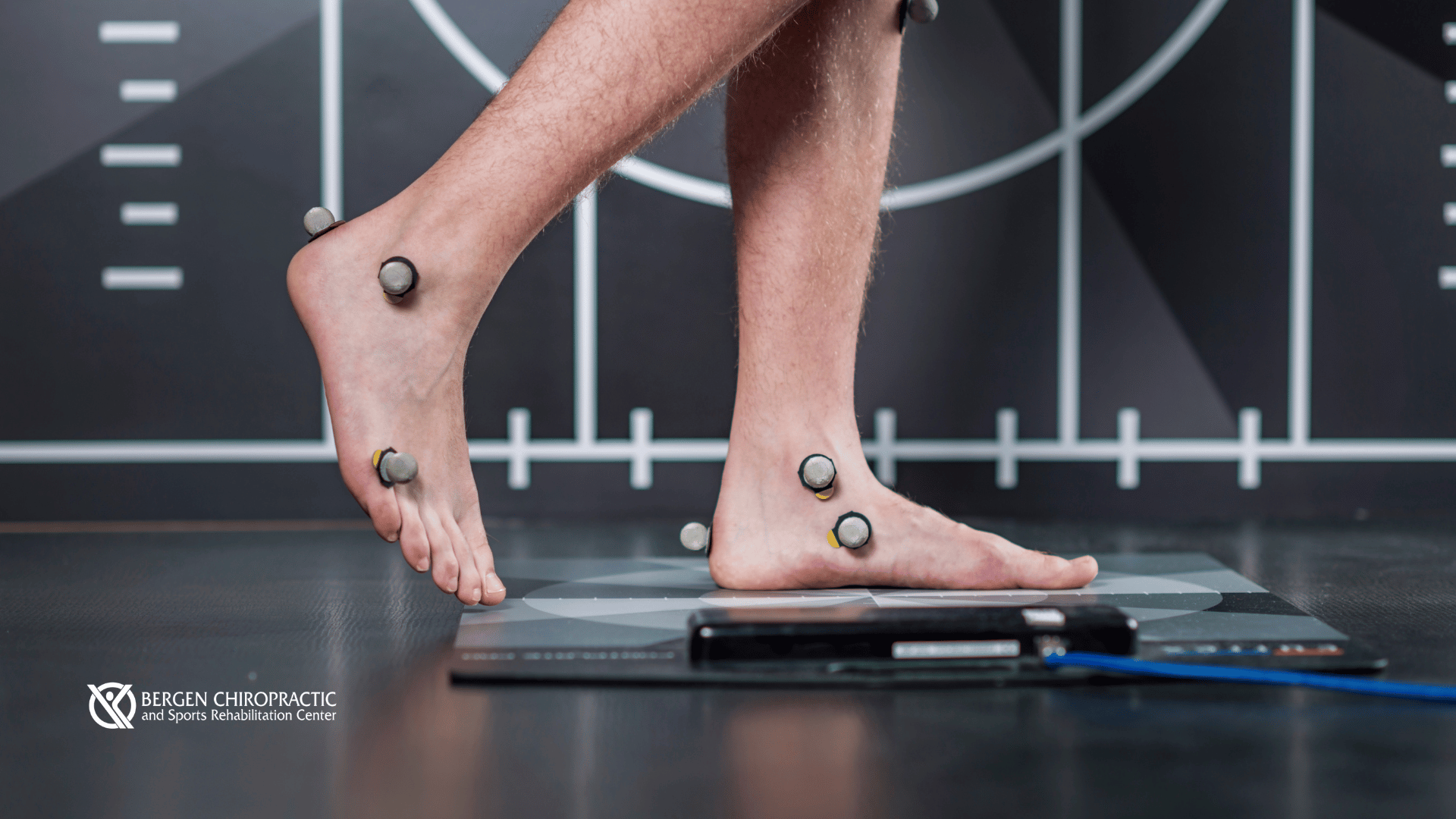
Are MRI and Ultrasound in Diagnosing Plantar Fascia Issues Needed?
MRI and ultrasound are not always necessary but can sometimes provide invaluable information.
Ultrasound is often considered the first-line imaging tool for plantar fasciitis. It’s quick, cost-effective, and doesn’t involve radiation. It can show thickening of the plantar fascia, a key indicator of plantar fasciitis. A thickness greater than 4mm is generally considered abnormal.
Ultrasound can detect changes in the fascia’s structure, like loss of the normal fibrillar pattern or hypoechoic areas indicating degeneration. It allows for dynamic imaging, which means the doctor can move your foot during the exam to observe how the fascia behaves.
MRI provides even more detailed images of the plantar fascia and surrounding tissues. It can show thickening and edema (swelling) in the fascia and adjacent tissues, indicating inflammation.
MRI is beneficial for detecting partial or complete tears in the plantar fascia. It can help rule out conditions that mimic plantar fasciitis, like stress fractures or tumors.
MRI is considered the gold standard for imaging plantar fasciitis, but it’s usually reserved for cases where the diagnosis is unclear or when conservative treatments haven’t worked.
Get a Professional Plantar Fasciitis Diagnostic Assessment and Treatment Today!
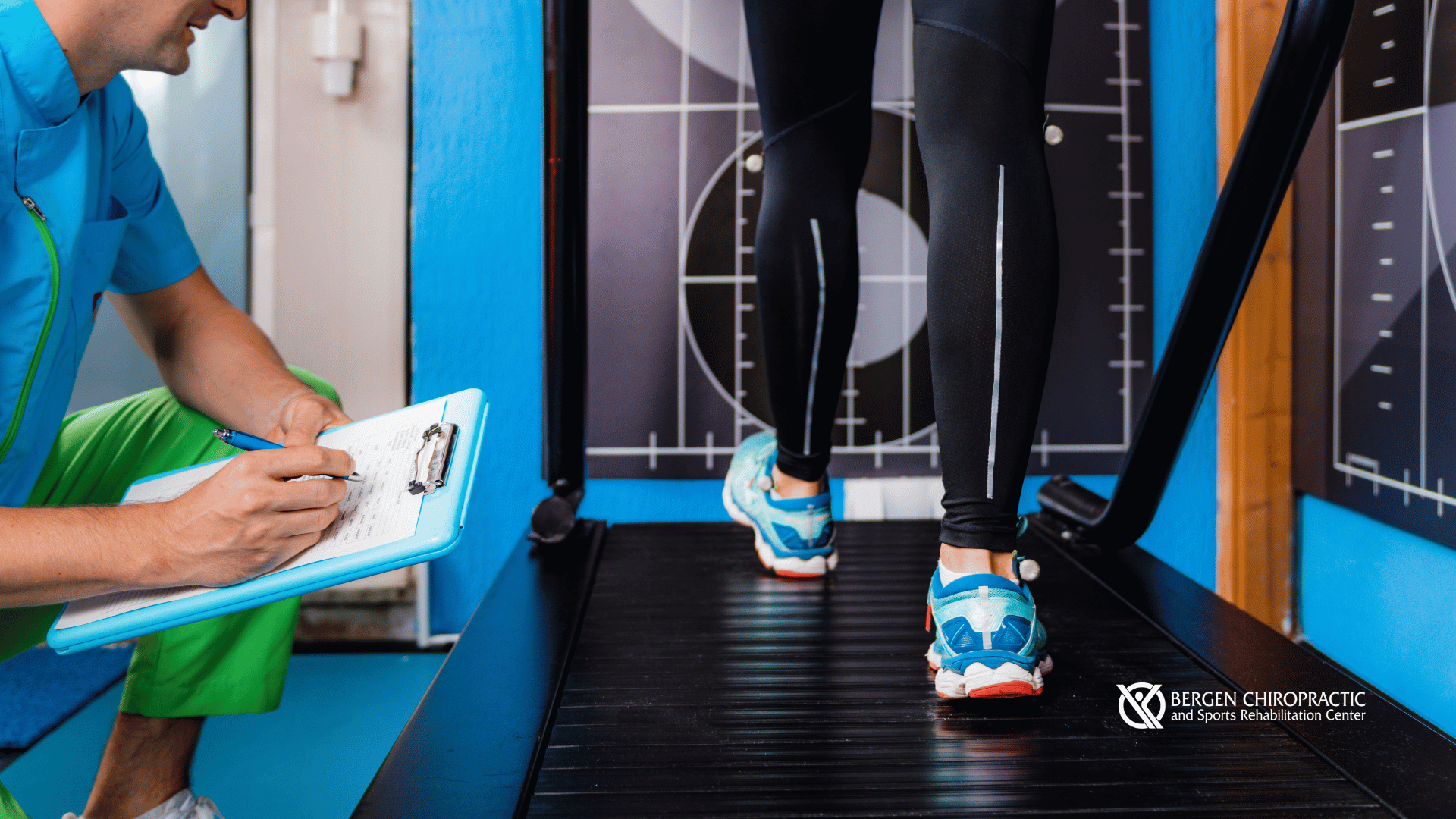
Still wondering if plantar fasciitis is the villain behind your foot pain? Don’t let it keep you guessing (or limping). At Bergen Chiropractic, we’re ready to unmask your pain and get you on the path to relief.
One effective treatment option for plantar fasciitis is the use of night splints. These help stretch the plantar fascia during sleep, significantly reducing morning heel pain.
The chiropractic team at Bergen Chiropractic and Sports Rehabilitation Center adheres to the highest medical standards to provide superior chiropractic care. Our mission is to provide unparalleled patient care in a comfortable, healing atmosphere.
Access our contact form or call us at (201) 357-6539 to learn more about our chiropractic care services! Our offices at 532 Anderson Avenue, Cliffside Park, NJ 07010, and 62 Summit Ave, Hackensack, NJ 07601, are ready to welcome you as we proudly serve the areas of New York, New Jersey, Philadelphia, PA, and Baltimore, MD. Also, access our blog, Facebook, and Instagram pages for more information on chiropractic care for plantar fasciitis!

